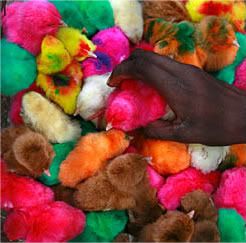 Recently I was asked about the common mistakes pet owners make.
Recently I was asked about the common mistakes pet owners make.
Over the years I’ve seen the same ones over and over again.
Although each situation may be unique, the trends behind them are not and so I decided to construct a list of the ten stupid mistakes pet owners make:
1. Impulsive Acquisition of Animals
Obtaining an animal without thinking it through is really getting off on the wrong paw.
Adoptions, purchases of puppy mill animals, or accepting an animal gift without researching about the breed or species is a common mistake and it makes life hell for the animal and the humans.
2. Lack of Preparation for Pet’s Arrival
This starts with the failure to research what pet will fit best into a household (refer to stupid pet owner mistake number 1).
Under this mistake are several related actions such as the failure to prepare the home for the new pet (often called safety proofing) and not budgeting for the annual needs of the animal (food, supplies, professional pet care such as grooming, training, wellness visits, emergencies, etc).
3. Failure to Teach the Rules of the Household
Animals must be taught the rules of human households—otherwise they act like a bunch of animals.
Most people fail to set rules or to enforce them. Some visitors even argue that poor behavior is “okay” or that the animal “…is just a baby.”
I’ve got news: Poor behavior becomes bad behavior and it is never okay.
4. Ignore the Positive
Correcting an animal when it makes a mistake is focusing on punishment instead of accentuating the positive.
Not rewarding good behavior is an error found in most pet owning households.
Many pets thrive on attention and will actually get reinforced for bad behavior by humans who don’t understand what they are reinforcing.
Animals seek attention—and to many it doesn’t matter if it is good or bad attention. This is why some undesirable bad behavior escalates instead of changing or stopping.
5. Dismiss Professional Care & Advice
Regular health care, body care (grooming care of the skin, coat, nails, anal glands) and behavior coaching are essential to the well-being of an animal.
Believe it or not, much of the advice given to pet owners by their veterinarian, groomer, animal trainer, animal behaviorist, or pet care professional is often ignored.
In many cases the pet owner fails to take action or to heed professional advice until a problem has escalated to a critical condition.
6. Humanize the Pet
One of the more disturbing trends sweeping the nation is the current humanization of pets.
Pets are animals and not furry humans–and pets are definitely not accessories.
When animals are not understood or respected for who and what they are—trouble follows. Treating pets as humans contributes to the increase in poor pet behavior and incidents.
7. Ignore or Don’t Learn to Recognize Body Language
Animals communicate through body language and behavior. If ignored, animals will escalate into inappropriate behaviors such as biting or scratching.
Ignoring body language and signals from the animal are why many injuries occur.
8. Procrastinate
Delaying action when it comes to house training, grooming, behavior training, or wellness care often results in injury or illness.
Prevention is easy—it only requires early action.
9. Don’t Adequately Supervise Pet
Over 4.7 million reported dog bites occur annually in the United States simply because people fail to supervise their pets.
It gets ugly when small children are around. Public incidents involving other animals or humans should not be so common and many more are not reported.
10. Commitment Failures
An estimated four million animals end up in shelters around the nation annually because people do not commit to keeping an animal through its entire lifetime.
Other animals are simply abandoned to fend for themselves–many end up suffering from starvation, dehydration, and other dangers.
I am sure you will want to chime in with your favorites–please comment below.


